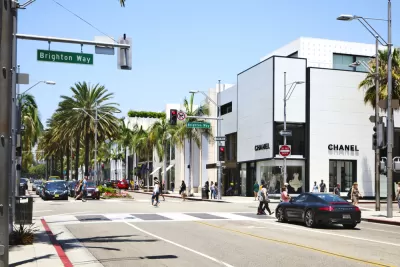Recent studies have called into question the predominant narratives on gentrification. A more precise definition of the term as it works in the United States is required.

Henry Grabar surveys the latest evidence of gentrification and displacement as trends in neighborhoods around the country and notes two dynamics:
All three of those reports bolster the conventional narrative about urban change in America, which is that urban neighborhoods are getting whiter and wealthier, sometimes at the expense of longtime residents. Yet all three emphasize that, statistically, those changes run very much against larger currents of metropolitan change. The most likely story, for most Americans in most cities, is that their neighborhood is getting poorer and less white. There is no city in the country where low-income people are more likely to live in a neighborhood that’s getting richer than one that’s getting poorer.
Grabar is basing that summary on three recently published studies of demographic and neighborhood changes: one by the New York Times, one by the National Community Reinvestment Coalition, and one by the Institute on Metropolitan Opportunity at the University of Minnesota Law School.
The three new studies emphasize the need for us to keep two ideas in our heads at once: Gentrification is real and is sometimes accompanied by displacement. But most neighborhoods are either rich and getting richer, or they are just getting poorer (mostly the second).
Digging into each of the studies for specific geographic examples, and using Beverly Hills as a star example, Grabar builds the case that too many cities claim the specter of gentrification, and it is a major obstacle to land use reforms such as SB 50 in California.
FULL STORY: Gentrification Got Gentrified

Planetizen Federal Action Tracker
A weekly monitor of how Trump’s orders and actions are impacting planners and planning in America.

San Francisco's School District Spent $105M To Build Affordable Housing for Teachers — And That's Just the Beginning
SFUSD joins a growing list of school districts using their land holdings to address housing affordability challenges faced by their own employees.

The Tiny, Adorable $7,000 Car Turning Japan Onto EVs
The single seat Mibot charges from a regular plug as quickly as an iPad, and is about half the price of an average EV.

Seattle's Plan for Adopting Driverless Cars
Equity, safety, accessibility and affordability are front of mind as the city prepares for robotaxis and other autonomous vehicles.

As Trump Phases Out FEMA, Is It Time to Flee the Floodplains?
With less federal funding available for disaster relief efforts, the need to relocate at-risk communities is more urgent than ever.

With Protected Lanes, 460% More People Commute by Bike
For those needing more ammo, more data proving what we already knew is here.
Urban Design for Planners 1: Software Tools
This six-course series explores essential urban design concepts using open source software and equips planners with the tools they need to participate fully in the urban design process.
Planning for Universal Design
Learn the tools for implementing Universal Design in planning regulations.
Smith Gee Studio
City of Charlotte
City of Camden Redevelopment Agency
City of Astoria
Transportation Research & Education Center (TREC) at Portland State University
US High Speed Rail Association
City of Camden Redevelopment Agency
Municipality of Princeton (NJ)





























